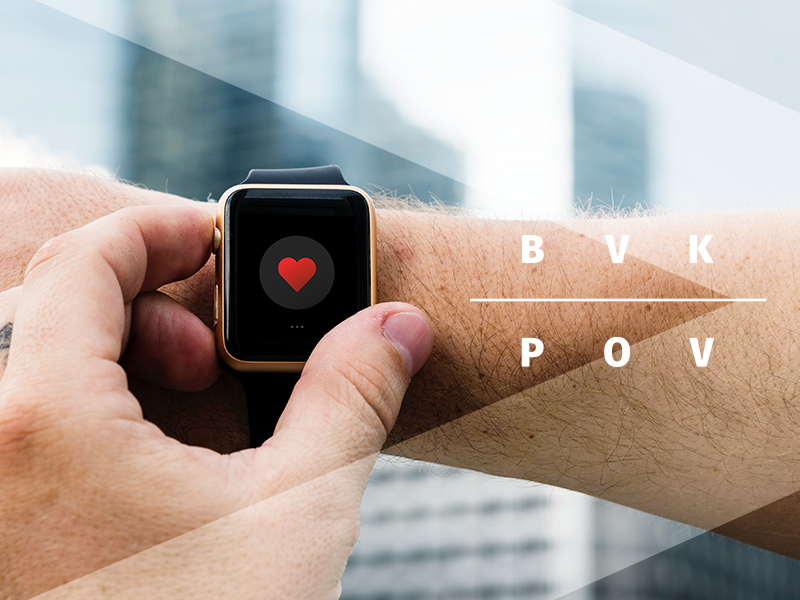Analog Brands and Digital Health
Healthcare

Differently, or Different?
As health systems accelerate the adoption of digital communications, diagnostics and therapeutics they often struggle with whether and how to brand those offerings. The purpose of this paper is to provide guidance to leaders as they look for best practices in building out their digital health enterprises.
Are digital communications, diagnostic and therapeutic offerings a way of doing things differently, or are they really something different?
That question is at the core of a brand strategy conundrum many “analog” health systems face as they accelerate the adoption and deployment of digital health services. The question has previously been confronted by countless industries like retail, financial services and transportation, where new technology has given rise to digital native brands like Uber, Airbnb, Amazon, and Netflix that both teased and then met rising consumer expectations of on-demand access to goods and services.
In health care, the tension between analog brands and digital health can manifest as questions like:
- Do health plans and providers brand virtual service applications as a distinctive suite of services, or, alternatively, should they simply market virtual encounters as a way to access care differently?
- Should robotic surgical and other procedures be organized as a branded suite of advanced procedures, or simply as a new modality for an existing service with differentiated benefits?
- Should treatment of neurological and behavioral disorders with online advanced Cognitive and Behavioral Therapy (CBT) and interventions be branded as something radically different, or simply another means of delivering an existing set of therapeutic services?
The implications of how these questions are answered can be significant. Best practice is not to brand separate offerings and suites of services unless you have a compelling and durable advantage. And, the offering significantly impacts provider or plan selection thus making it potentially worthy of adding to the family of brands. Yet, the proliferation of digital health Apps invites exceptions to this best practice standard. The market is crowded with an overwhelming number of branded portals, digital diagnostic and therapeutic tools and general health tracking applications, many of which have been developed by asymmetrical, for-profit competitors that are less in the business of health care with roots in software and technology.
There is great temptation for health systems and plans to brand their own digital offerings to compete directly with these threats, despite the time and cost involved with introducing and building equity in new branded suites of services that can quickly lose their uniqueness and become ubiquitous. More than a few healthcare executive teams have brainstormed clever brand names for their digital offerings without giving full consideration to whether new diagnostic or therapeutic services, portals or Apps should be separately branded, how that separate brand ‘lives’ within the context of the parent brand, and how much that brand building will cost.
BVK Brand+Lever Point of View
While digital communications, diagnostic and therapeutic applications are transforming how health care is delivered and consumed, they do not invalidate longstanding best practice approaches to branding. Rather than create new digital health brands to differentiate from legacy analog services, we believe health systems and plans should focus instead on the distinctive benefits of digital health and incorporate those advances into the context of the organization’s core brand value proposition.
There are four fundamental reasons which underpin our recommendation:
- In time, as the distribution and adoption of technology accelerates, digital communications diagnostics and therapeutics will become the norm, not the exception. For example, in financial services, electronic funds transfers, mobile deposits and online account management are no longer considered e-banking service suites, but just how business gets done.
- Digital offerings are a customer-service imperative for healthcare, but not likely a durable source of brand advantage. All health system and plan competitors can (and likely will) invest the resources to bring their own digital offerings to market, making any first-to-market advantage transitory.
- The cost of building awareness and preference for digital health brands is significant; given the pace at which technology changes and applications become obsolete, branding next iterations of a digital health offering can be a futile exercise, with resources better allocated to communicating the benefits of digital diagnostics and therapeutics as attributes of the core health system or plan brand.
- Investing in branded suites often competes for visibility with the overarching brand value context and can distract from it. When you name the “leaves” on a brand “tree”, the attention shifts from the tree itself to the leaves. For health systems and plans that are already seen as big, confusing and often poorly orchestrated, creating this kind of brand confusion is a real mistake.
The proliferation of digital health offerings is rapidly changing how healthcare is organized, delivered and consumed. The benefits that accrue to consumers and providers from this digital revolution are dramatic. But, for your brand strategy, it is better to brand around the benefits of services that are increasingly digital, than the “how” digital modalities differ from analog service platforms.
BVK Brand+Lever is an advisory built on the underpinnings of brand as a business strategy. We offer a full complement of operational, service design, activation and leadership alignment consultation. To learn more, please contact:
Michael Eaton, Principle, 757.784.1277, [email protected]
Paula Serios, Senior Vice President, 949.677.8814, [email protected]